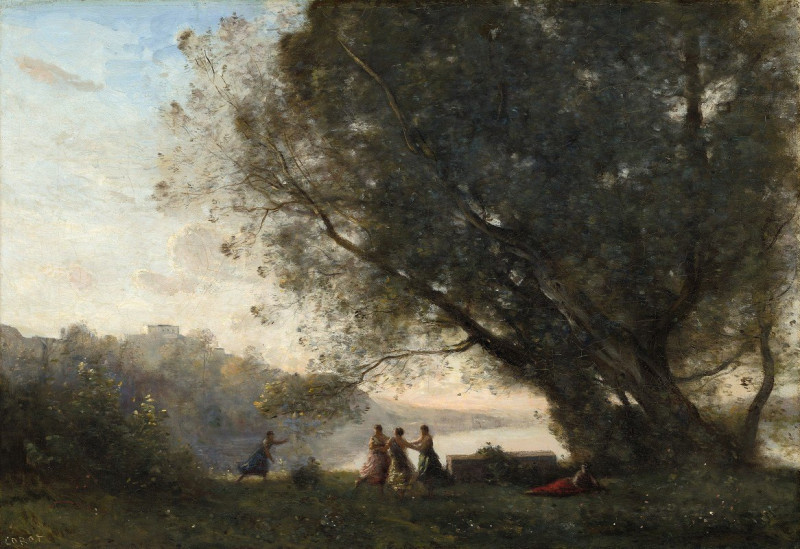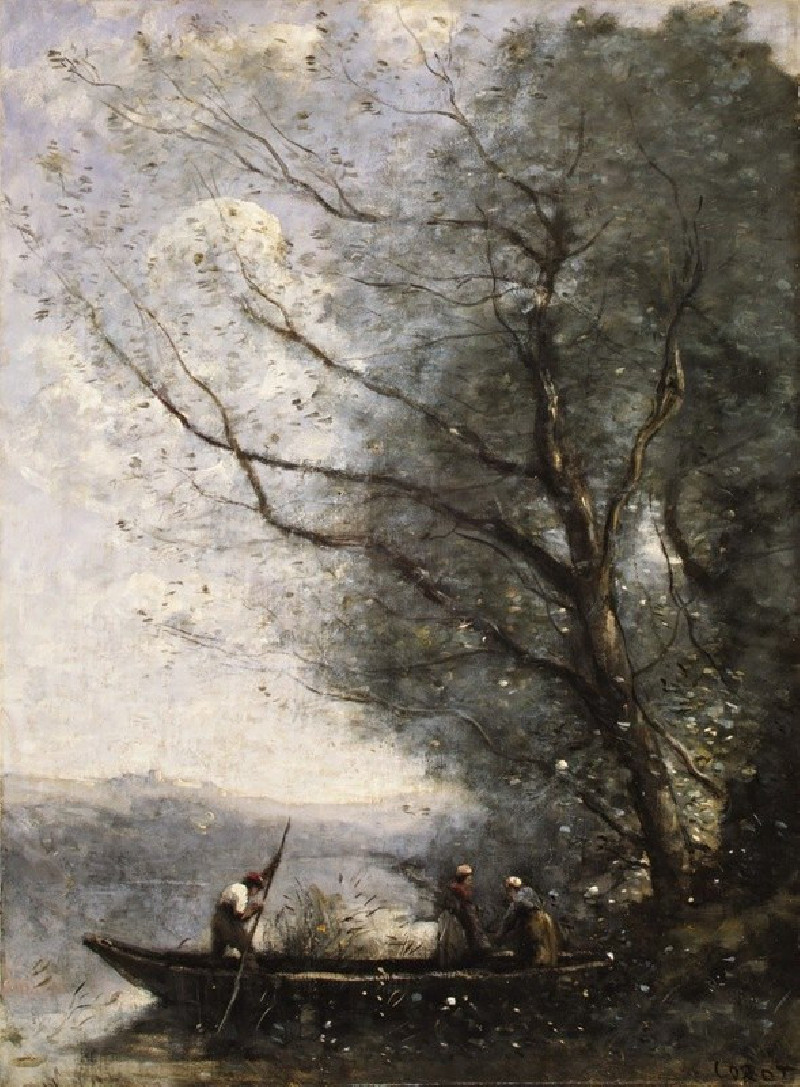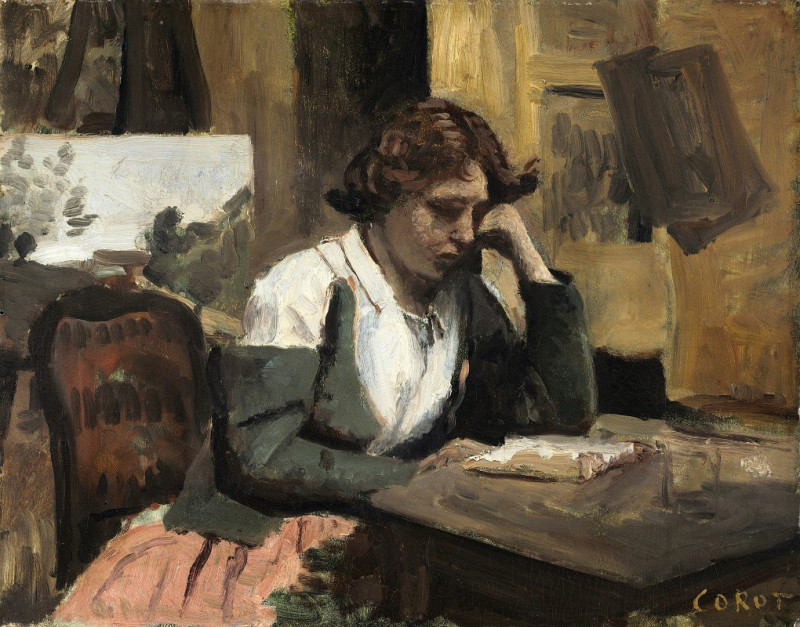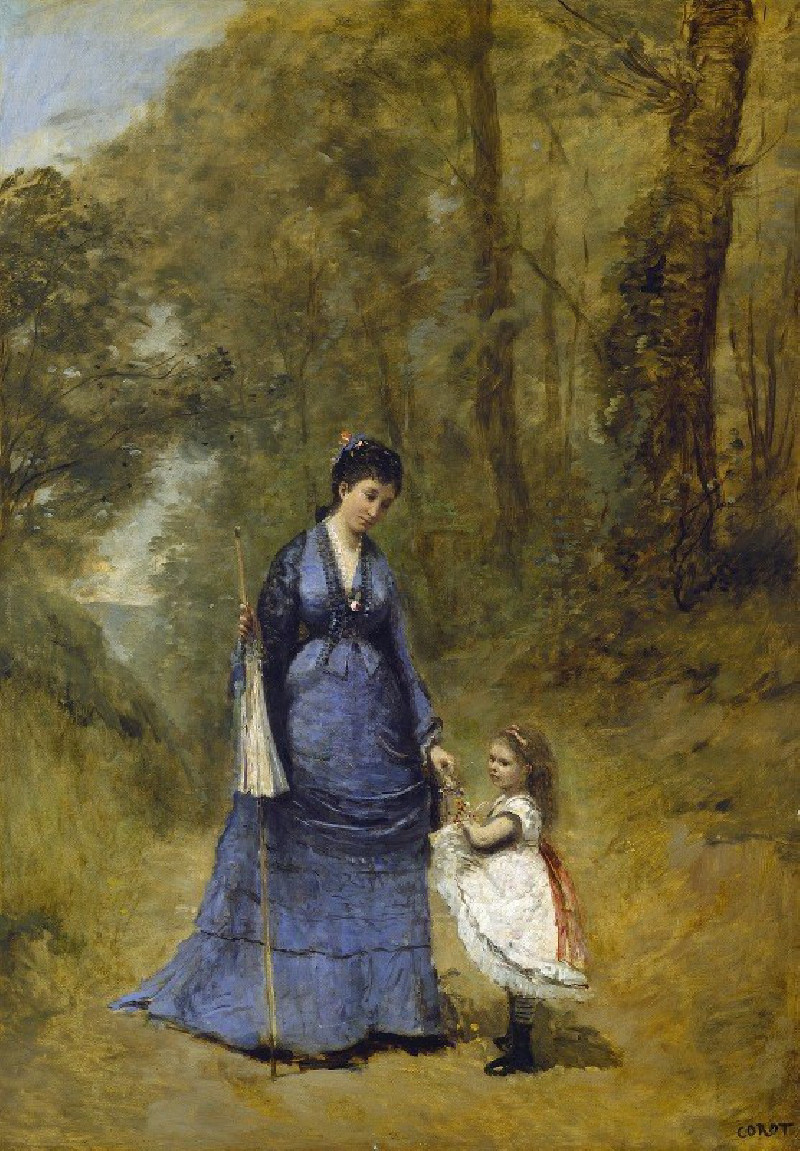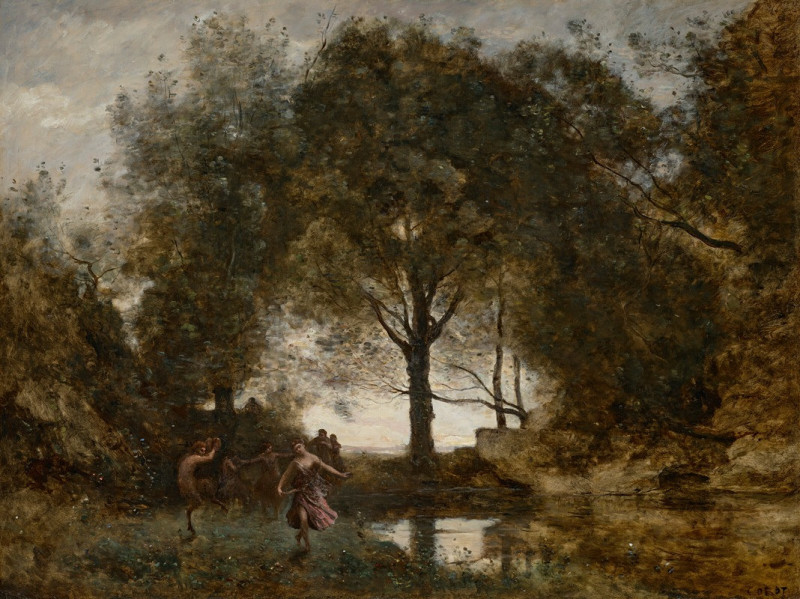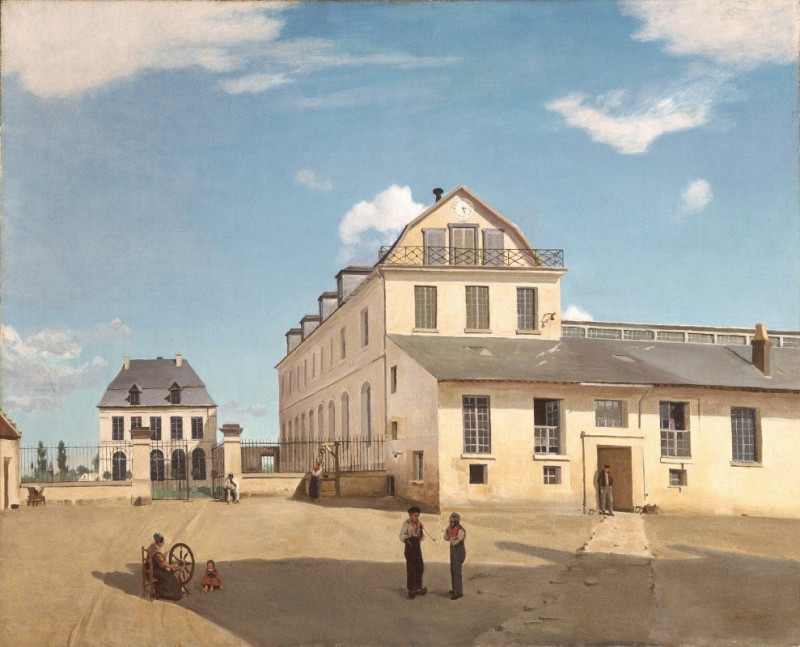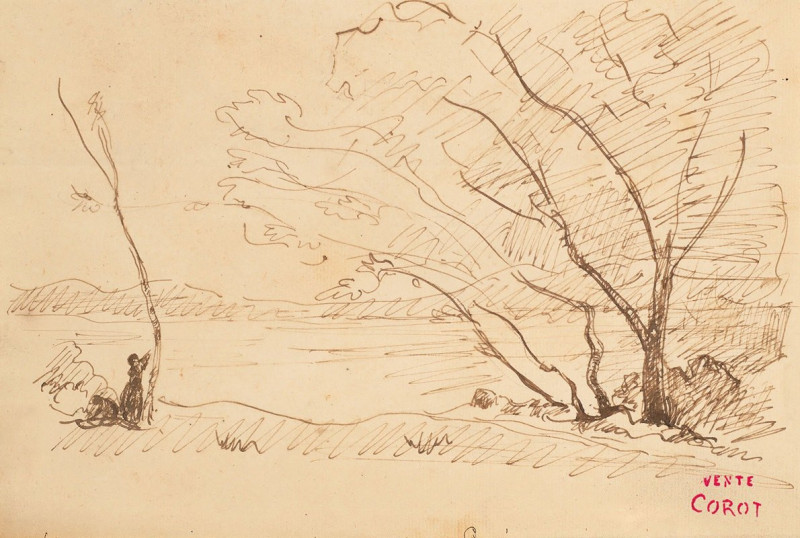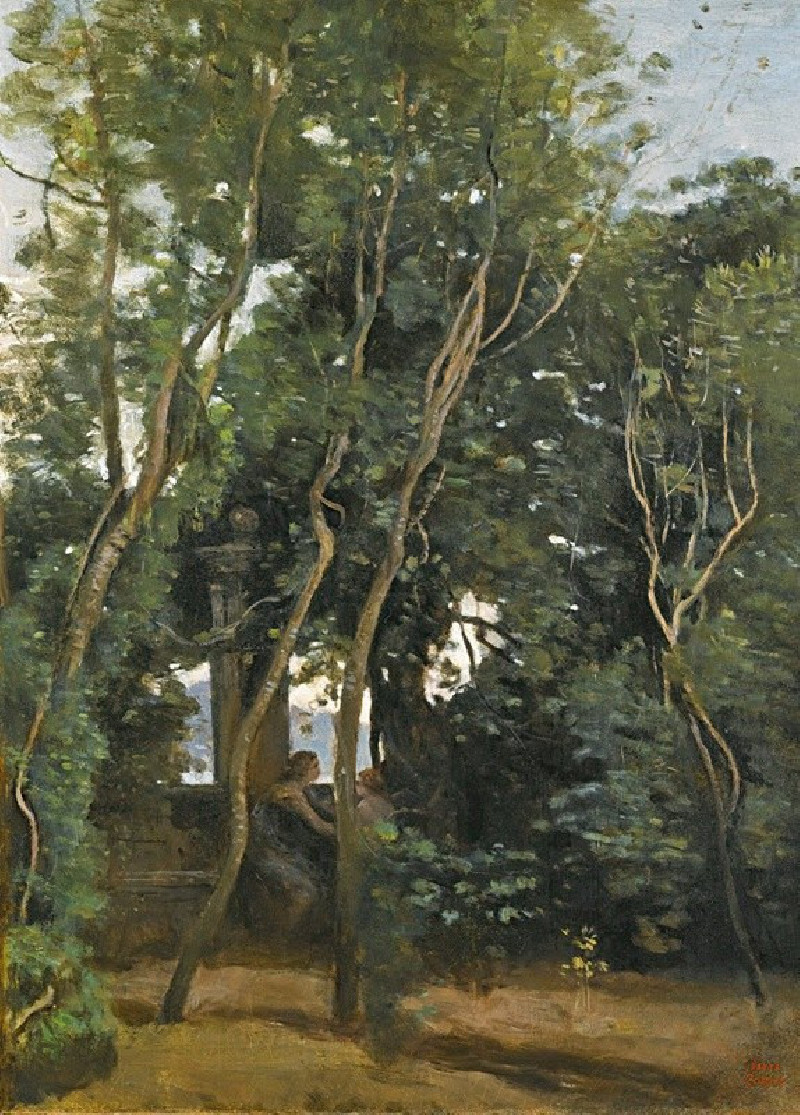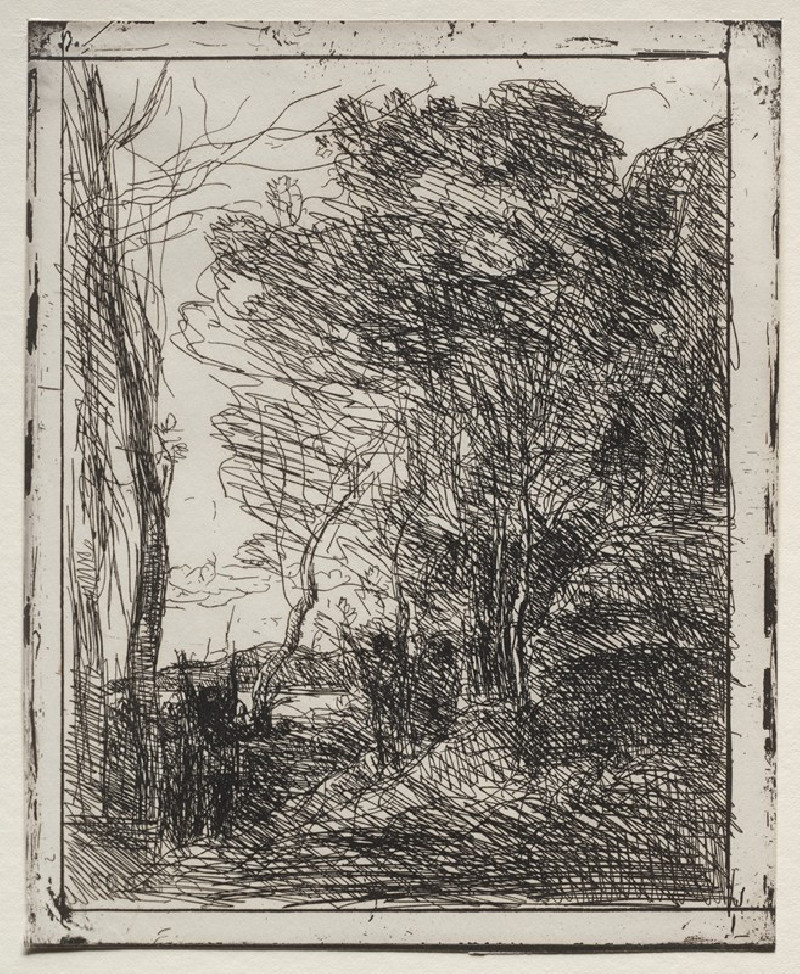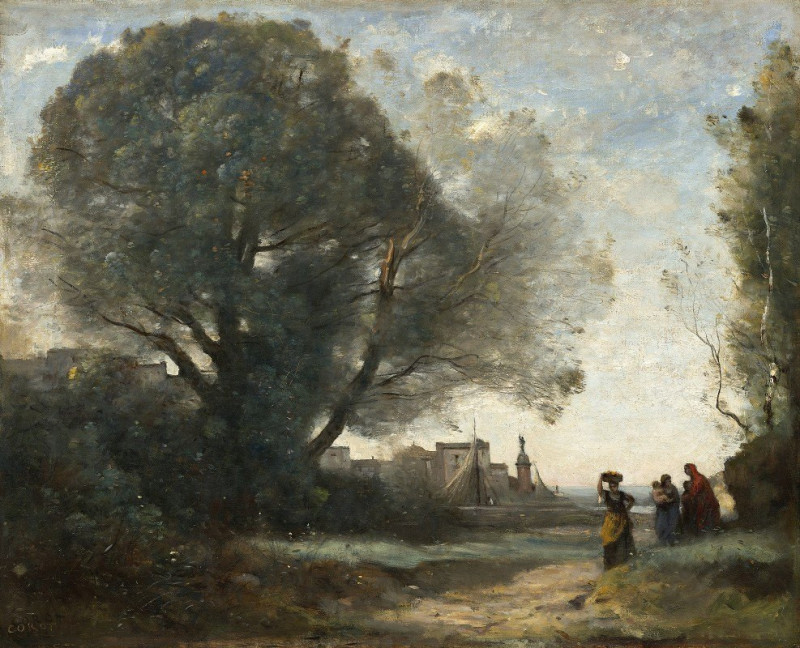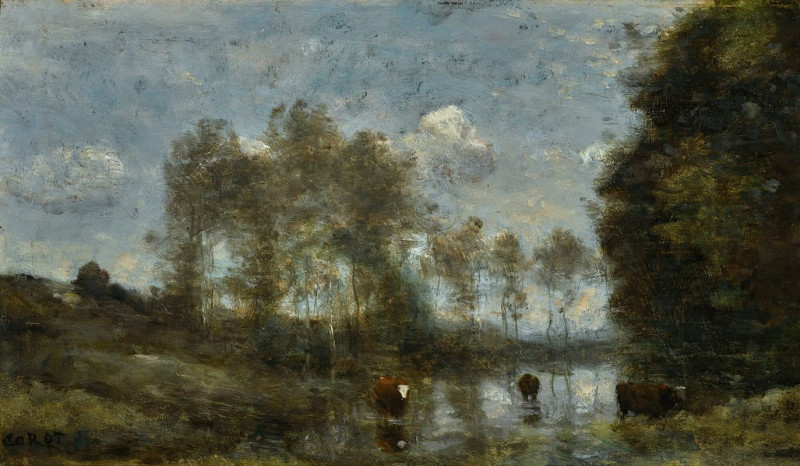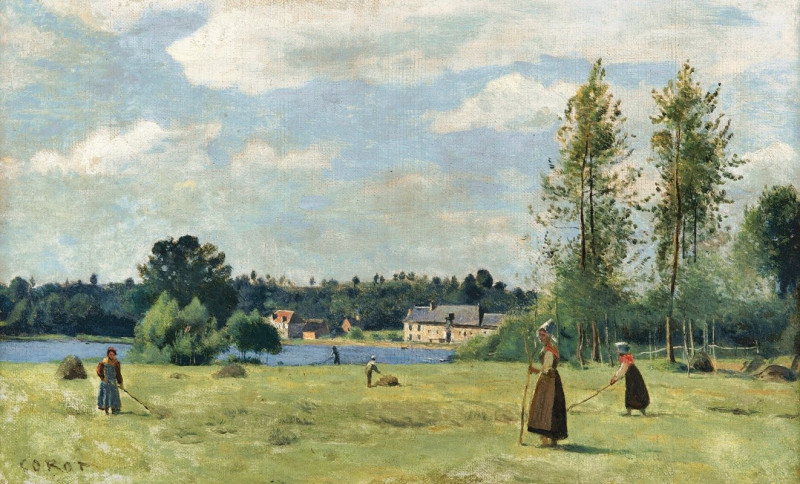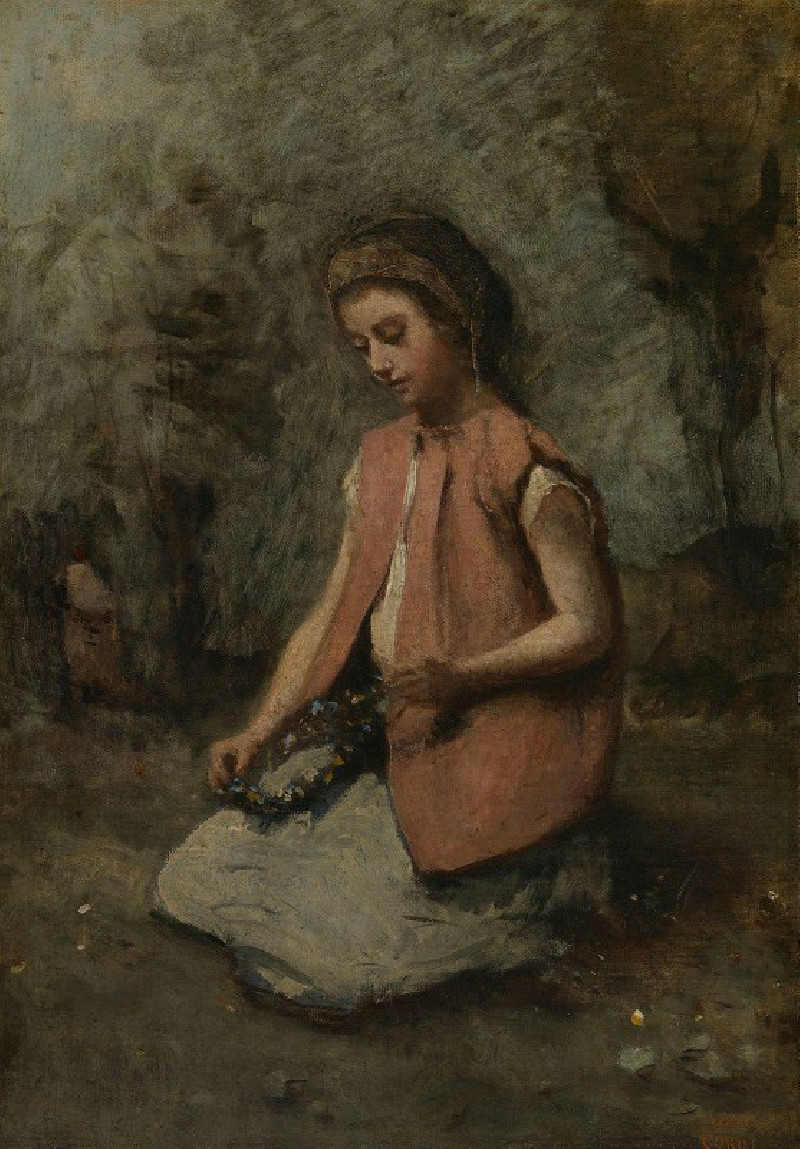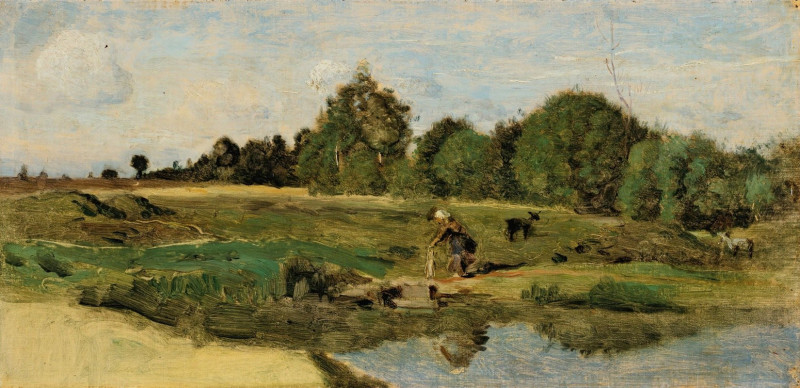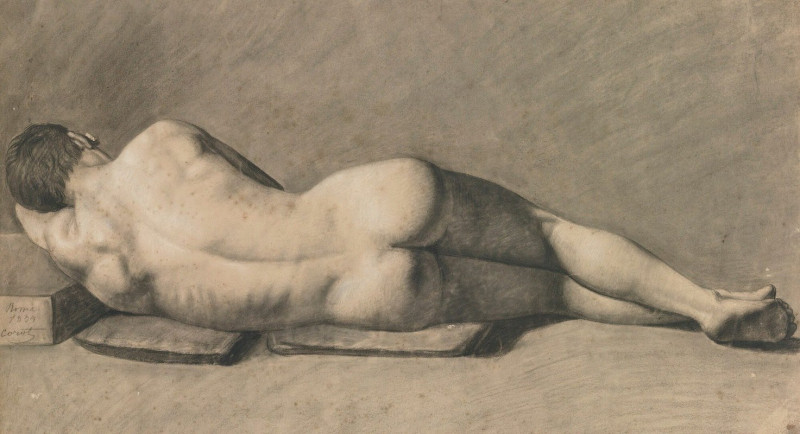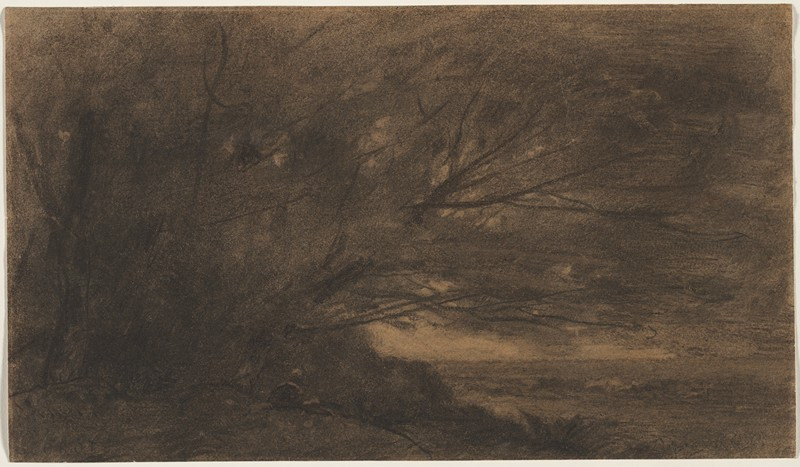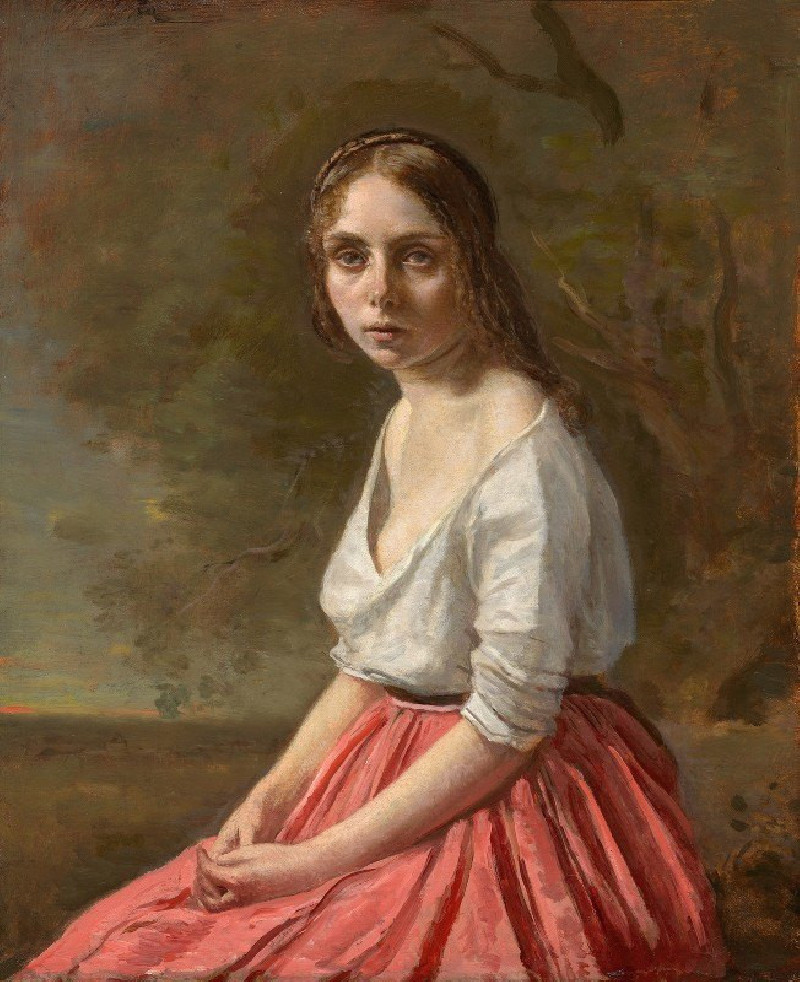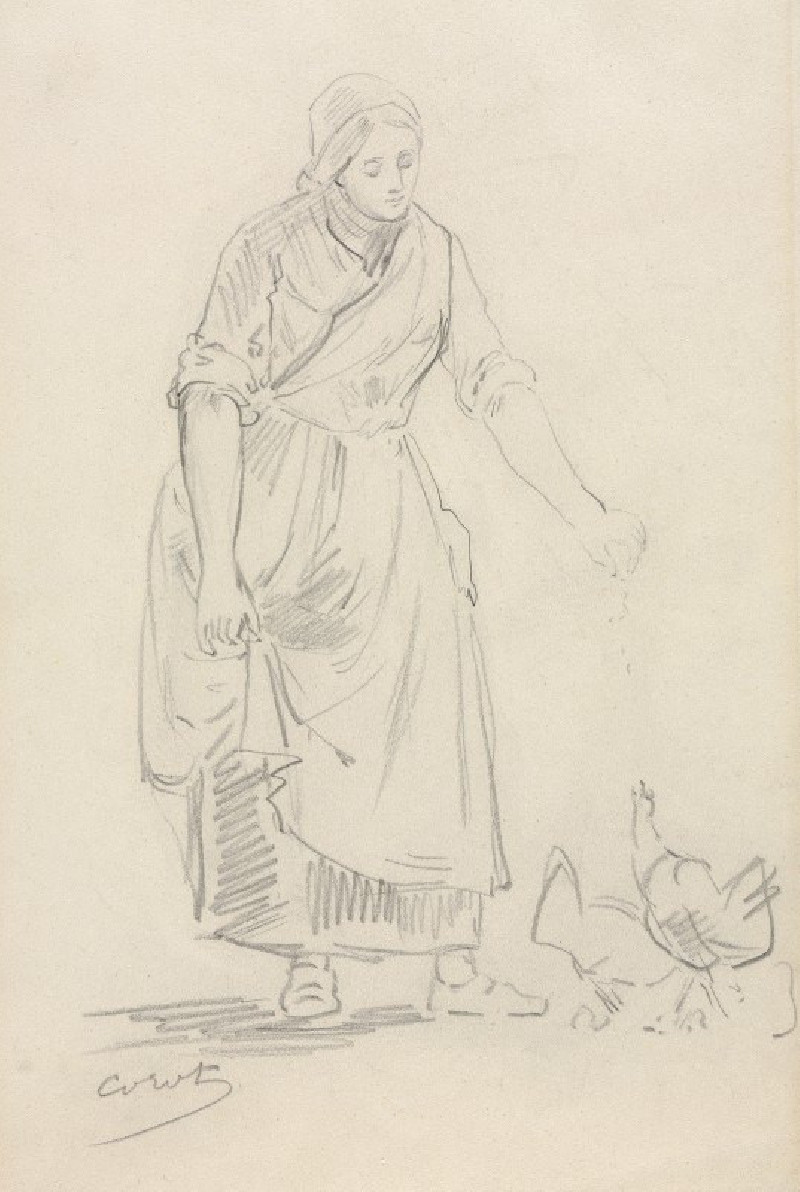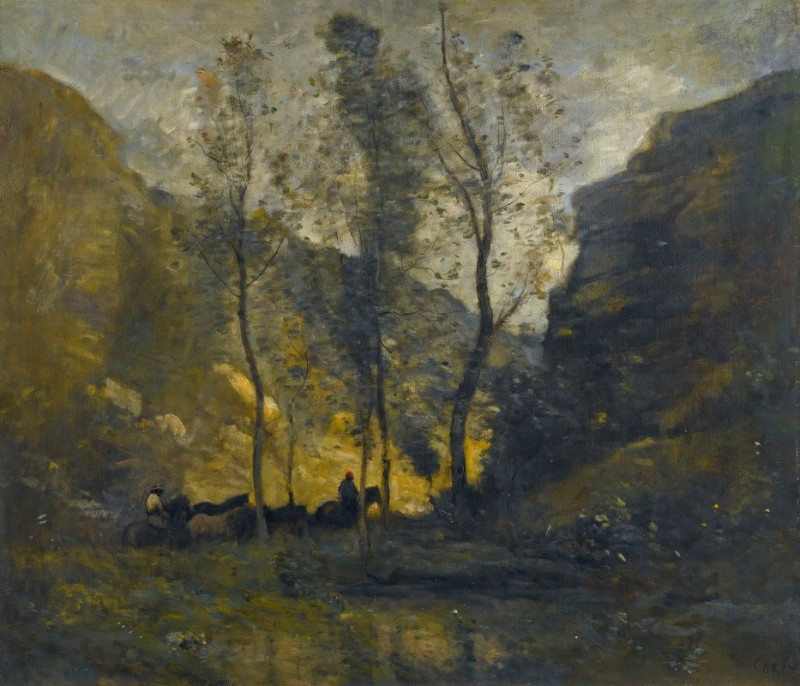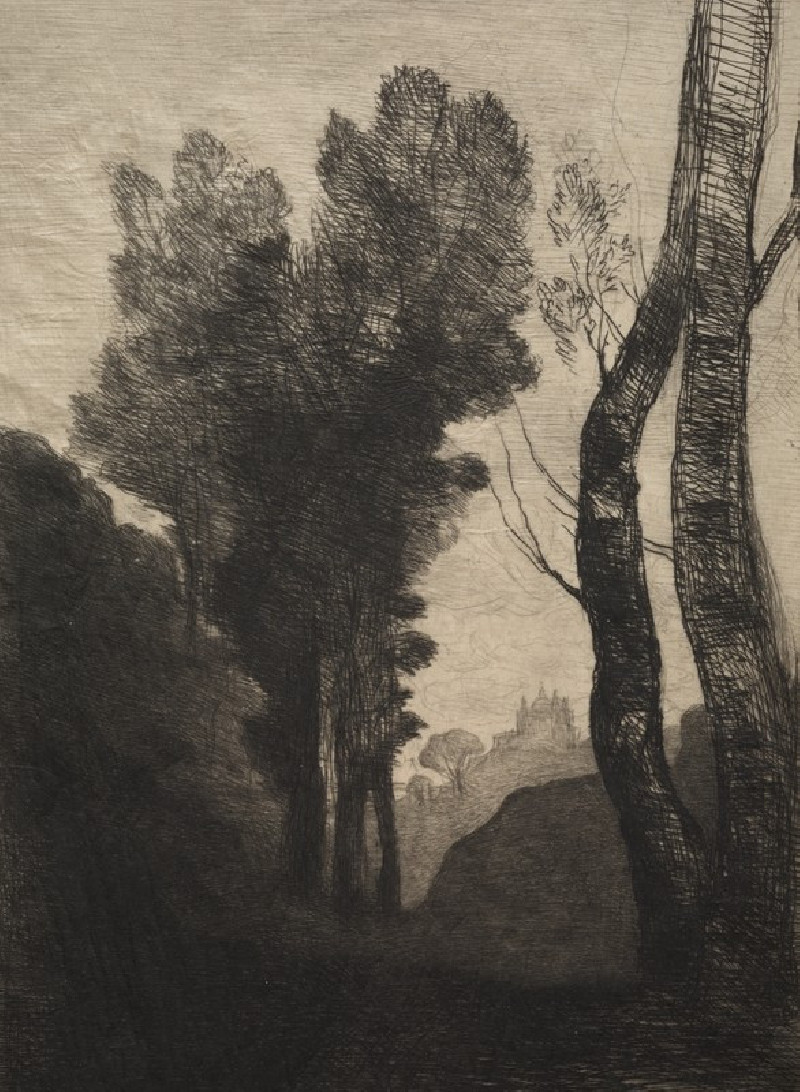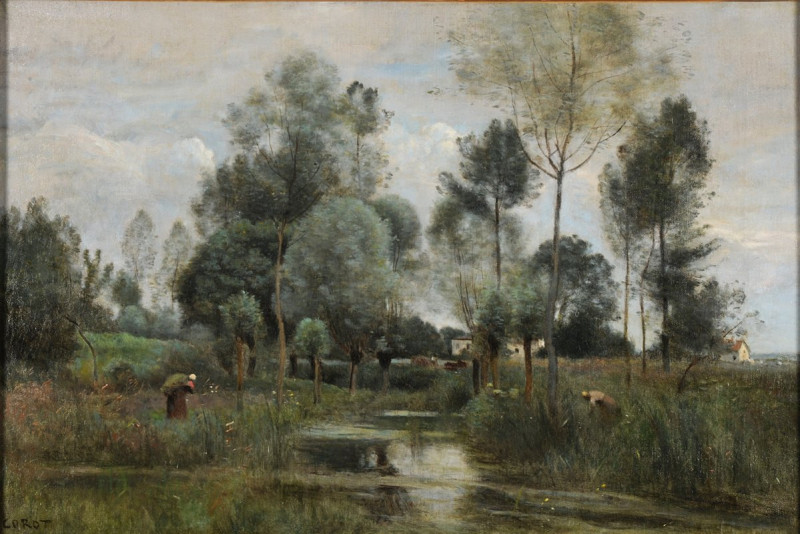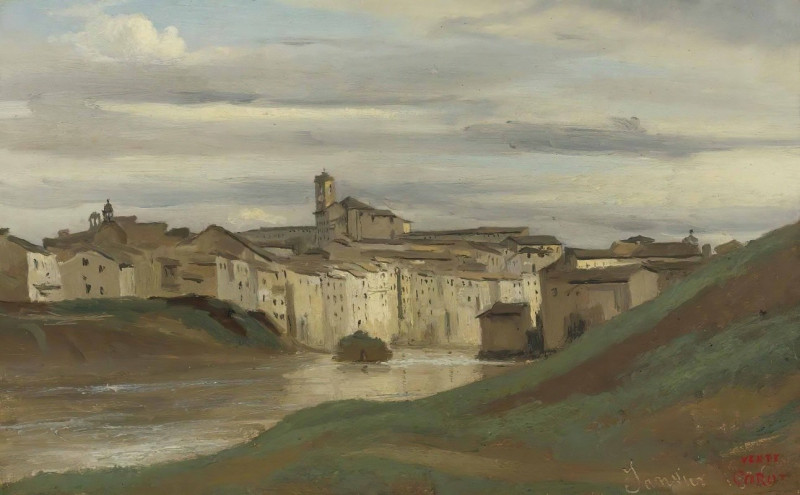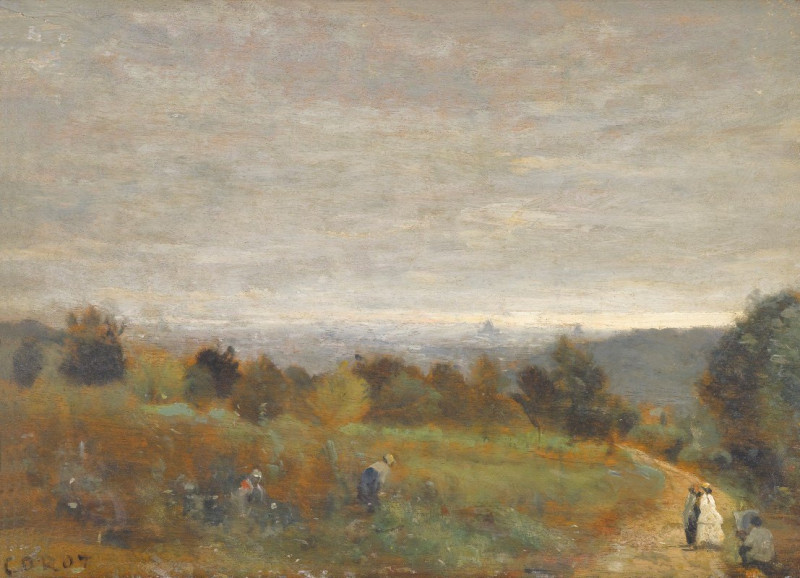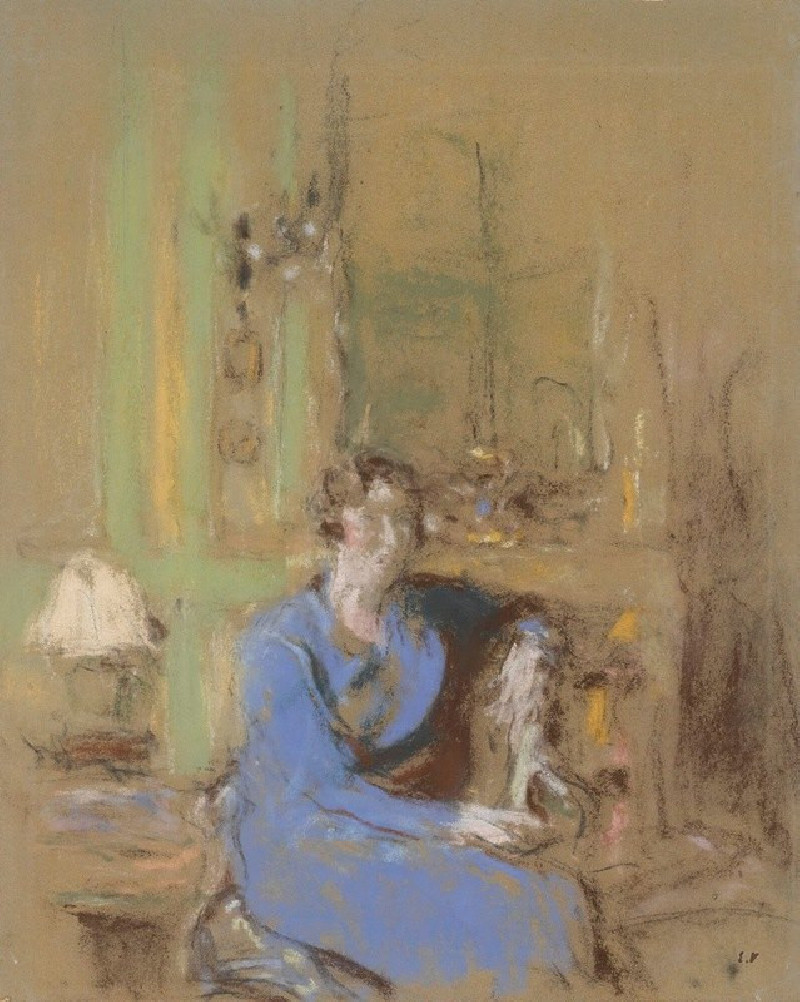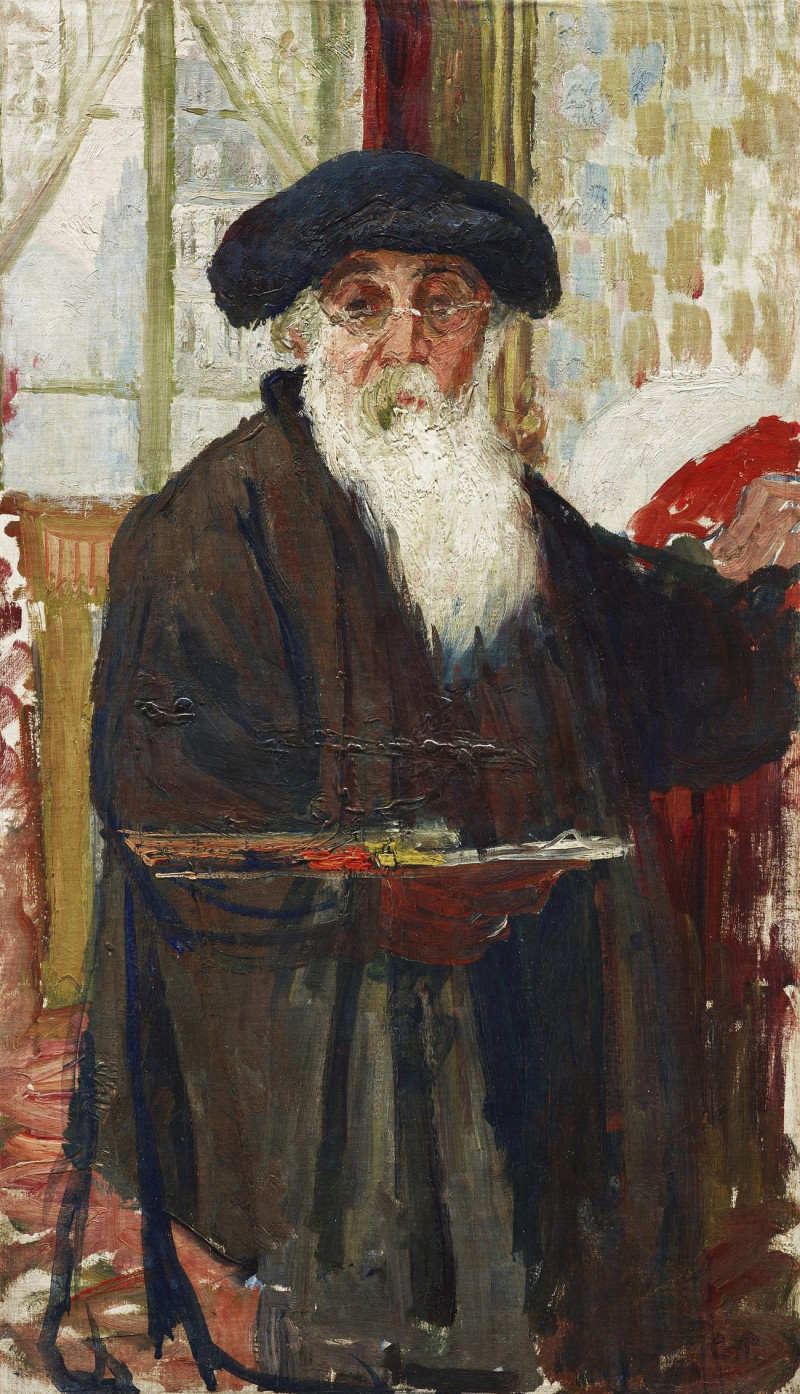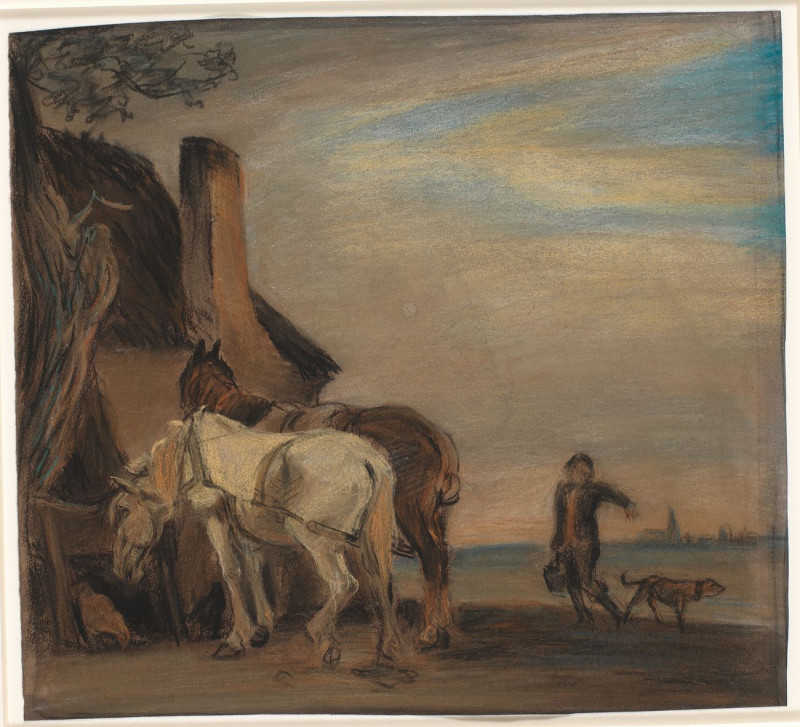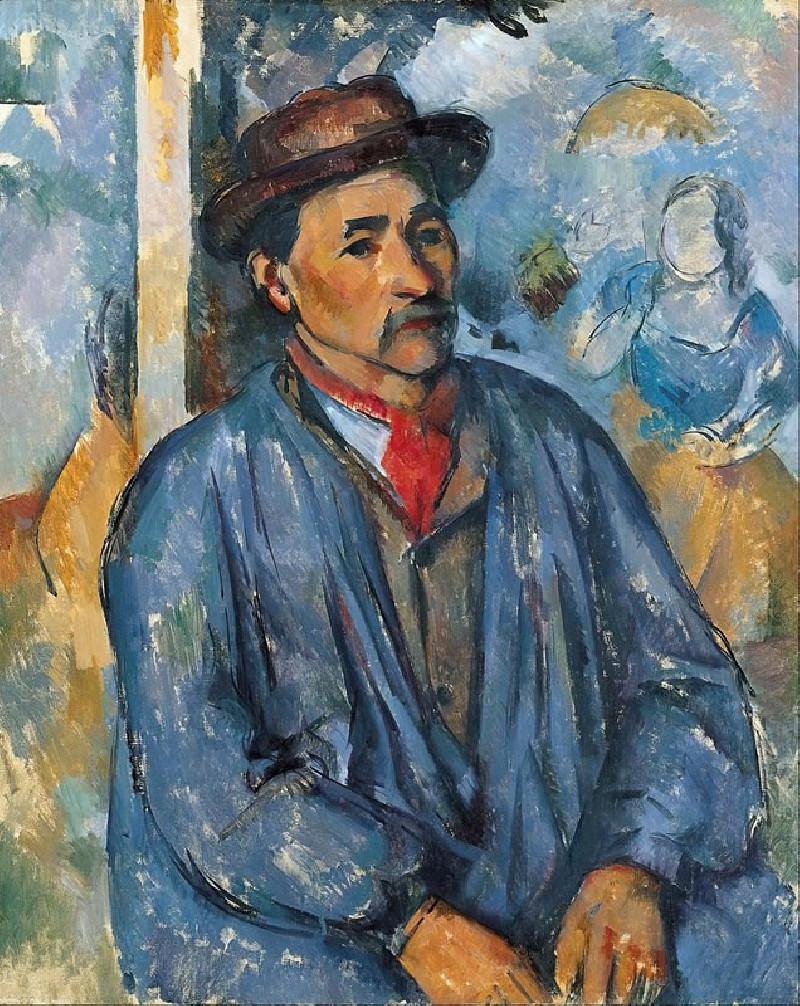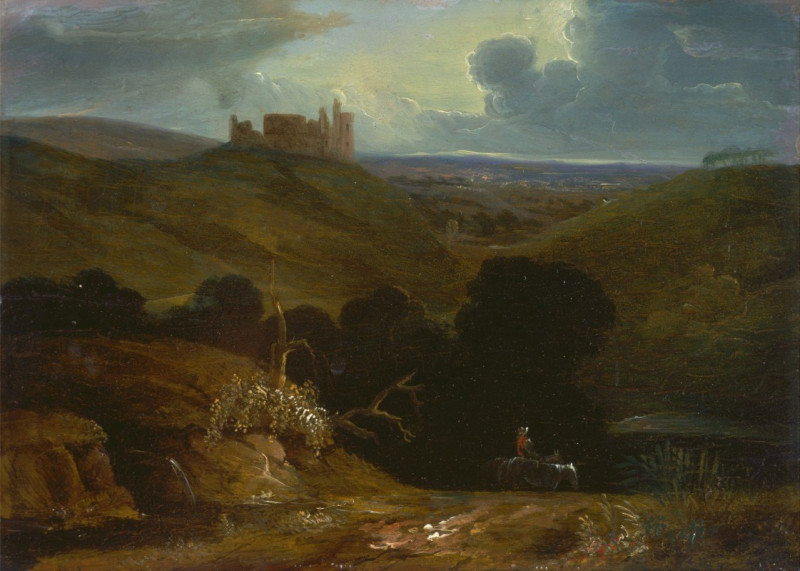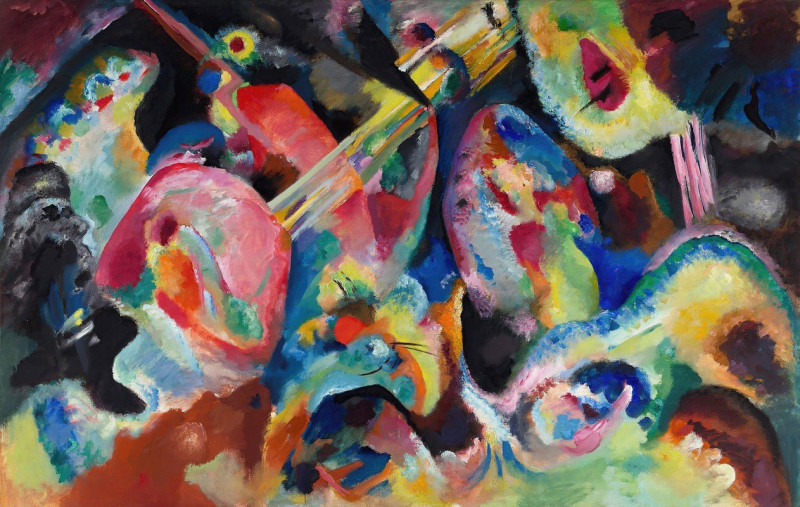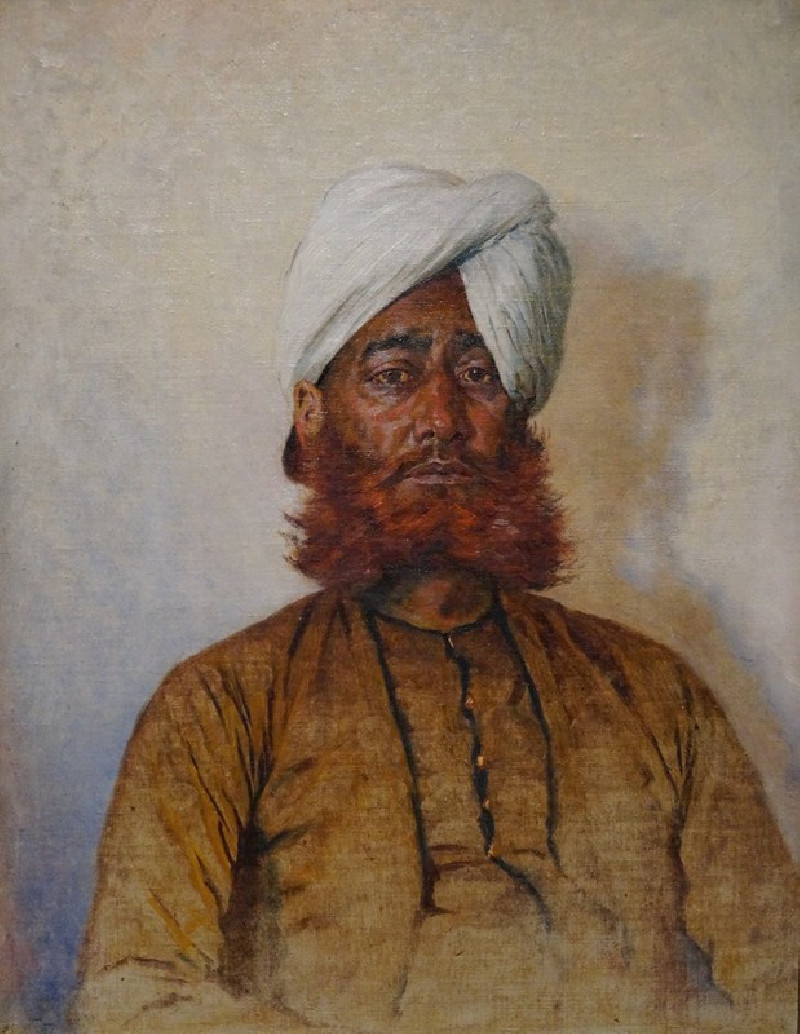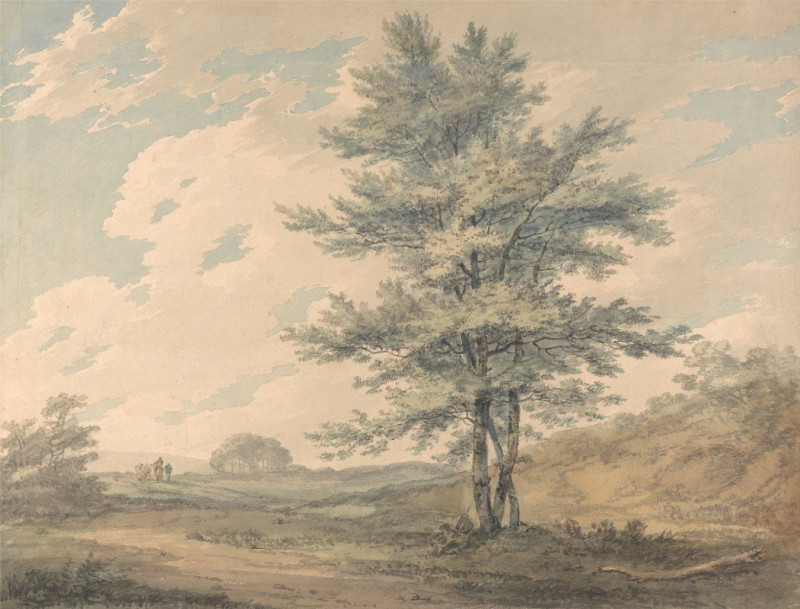Dance under the Trees at the Edge of the Lake (1865-1870)
Technique: Giclée quality print
Recommended by our customers
More about this artwork
Within the exquisite rendering of light and shadow, Jean-Baptiste-Camille Corot's "Dance under the Trees at the Edge of the Lake" (c. 1865-1870) invites viewers into an intimate, fleeting moment captured in nature. This enchanting artwork places us alongside a group of people, animated in the midst of a dance beneath the protective canopy of large, lush trees.The painting features a distinctive juxtaposition of the densely shaded foreground against an almost ethereal backdrop lit by a soft, diffused light. The massive tree dominating much of the painting's composition anchors the scene; its textured bark and sprawling branches give a feeling of enduring stability that contrasts with the dynamism of the dancing figures and the gentle fluctuation of light across the scene.Corot masterfully employs his brush to convey not just the physical beauty of the landscape, but the joyful human spirit infused within it. The figures, rendered with Corot's characteristic looseness, appear absorbed in their dance, enhancing the painting's overall sense of spontaneity and delight. The distant view of the lake, partly obscured by the misty horizon and the gentle slope leading towards it, invites the eye to wander leisurely into the depth of the landscape, adding a sense of serene expansiveness to the scene.This artwork serves as a potent reminder of the harmonious coexistence of humanity and nature, encapsulated through Corot's romantic lens—a scene at once timeless and captivating. "Dance under the Trees at the Edge of the Lake" thus stands as a testament to Corot's profound ability to blend human figures and natural environments into a cohesive, spiritually uplifting whole.
Delivery
Returns
Jean-Baptiste-Camille Corot was a French landscape and portrait painter as well as a printmaker in etching. He is a pivotal figure in landscape painting and his vast output simultaneously references the Neo-Classical tradition and anticipates the plein-air innovations of Impressionism.

